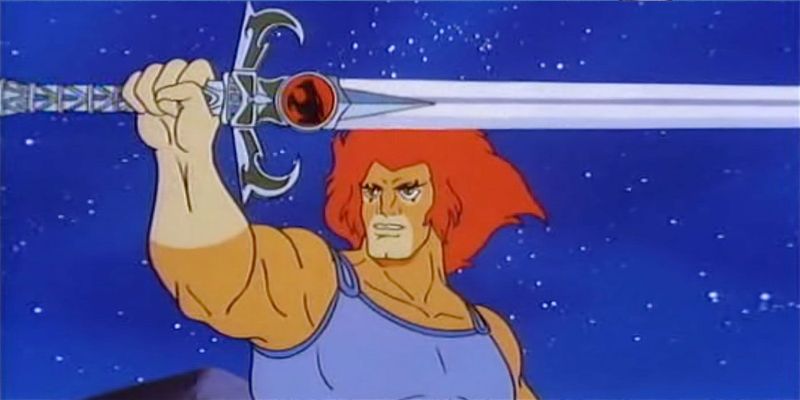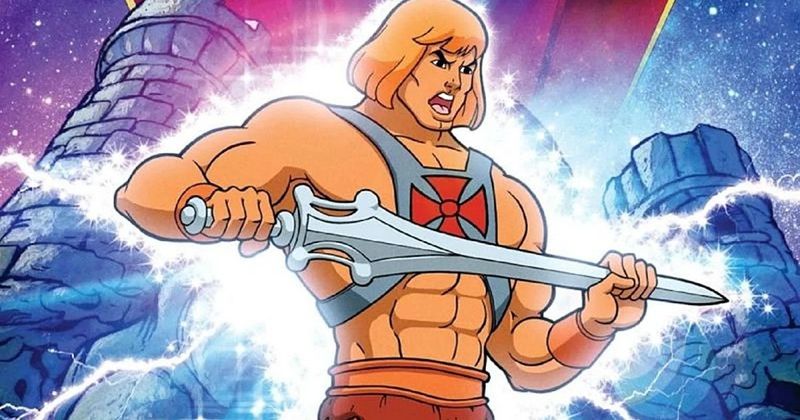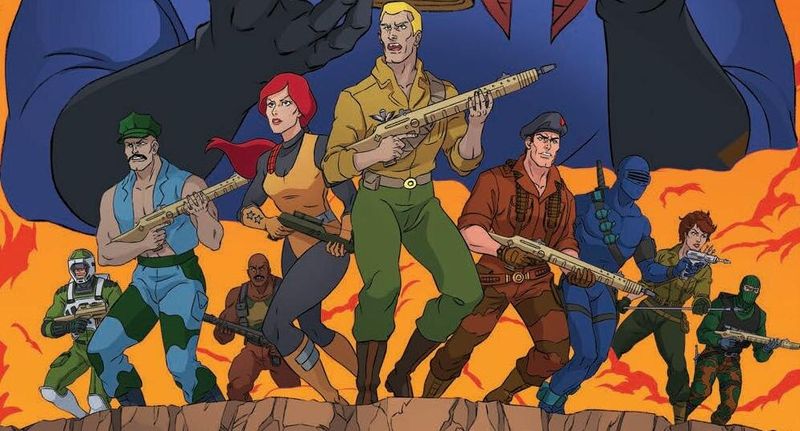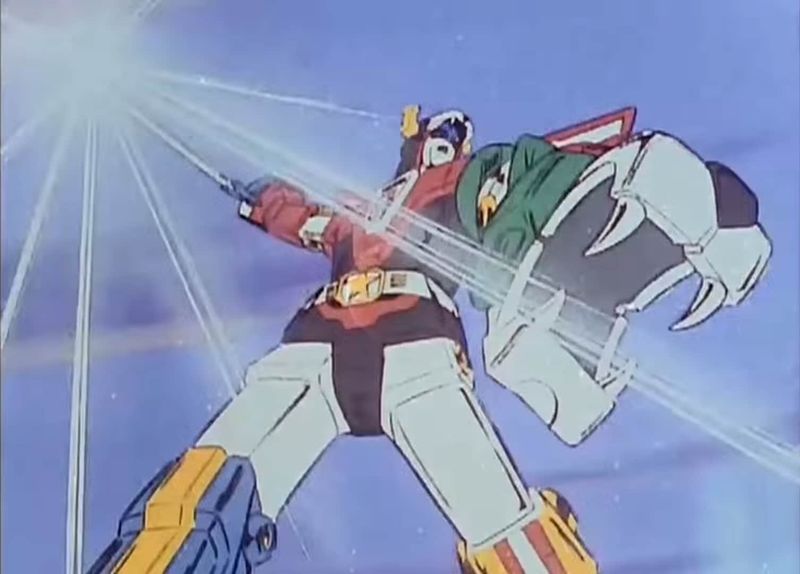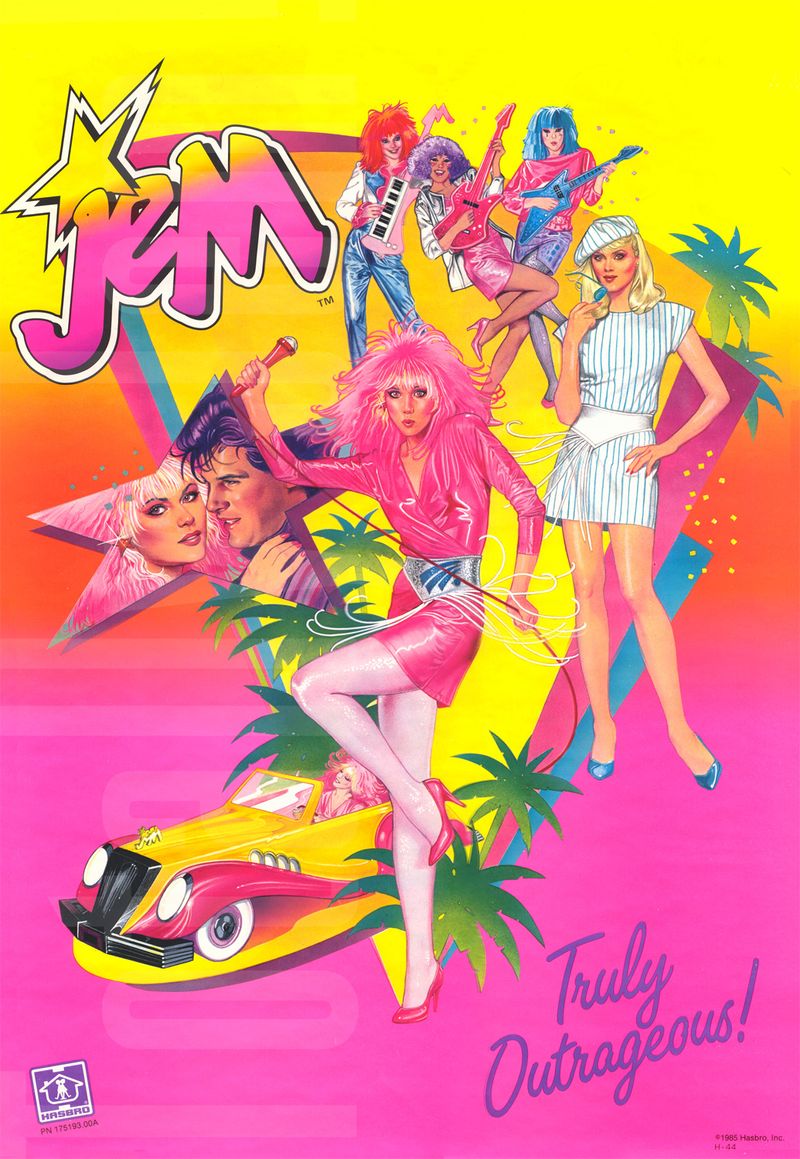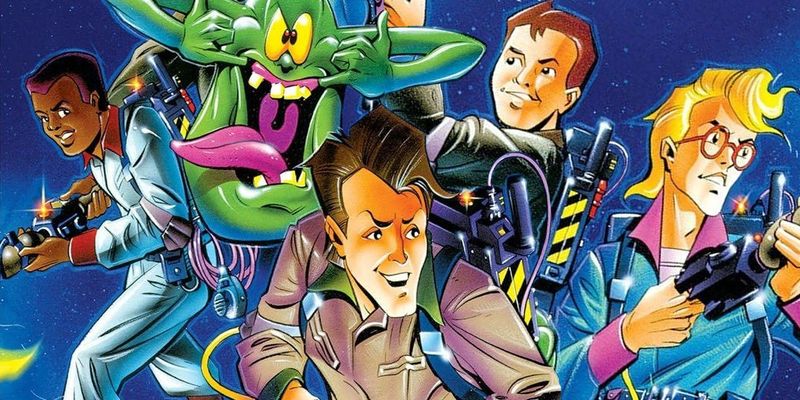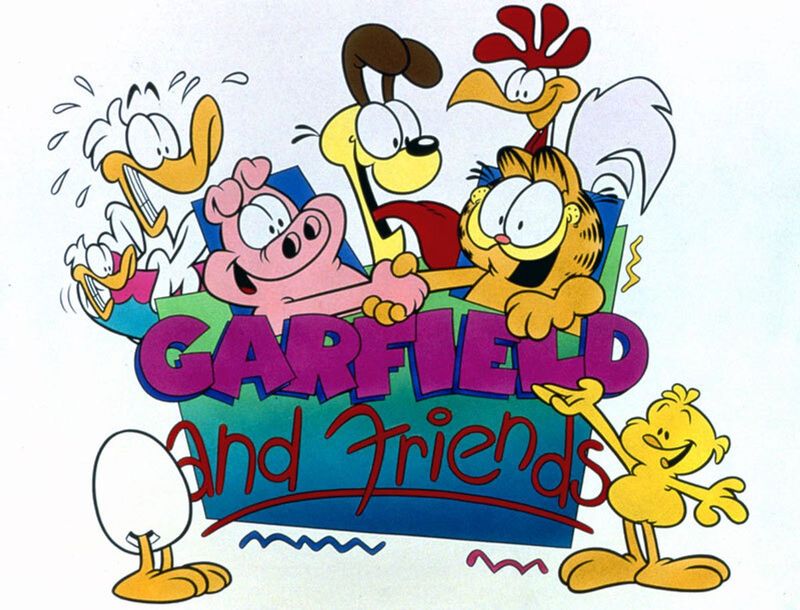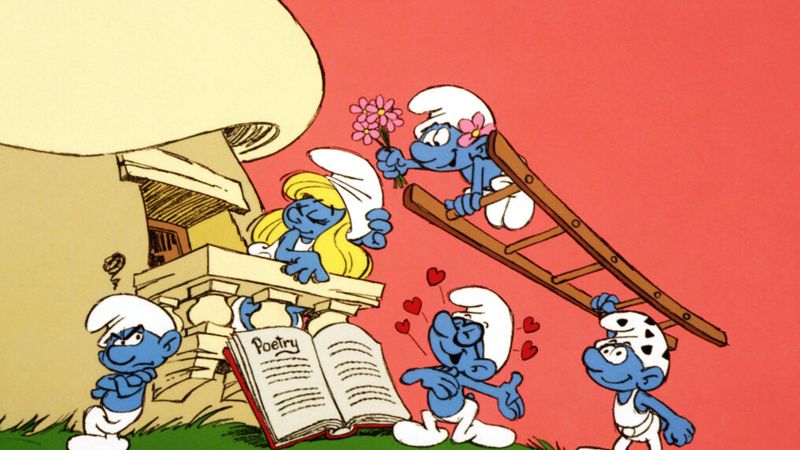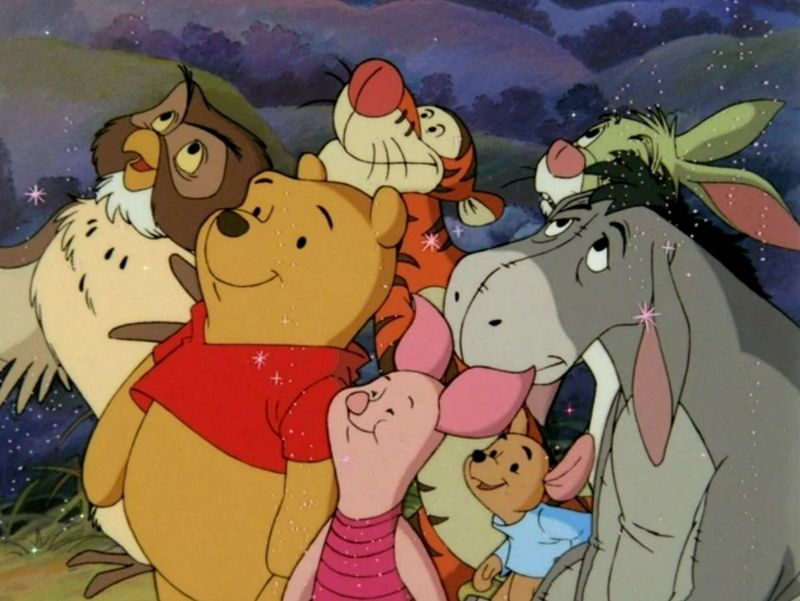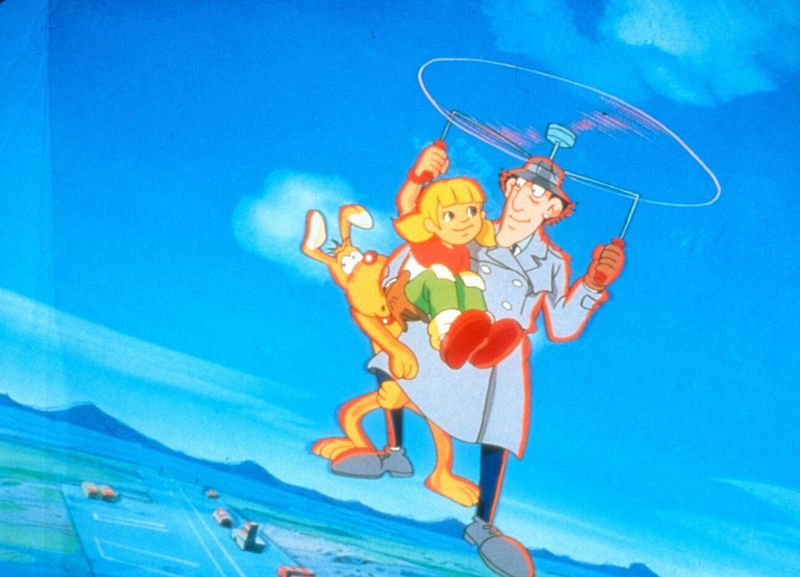Saturday mornings in the 1980s were pure magic for kids across America. While parents enjoyed sleeping in, children would wake up early, grab a bowl of sugary cereal, and plop down in front of the TV for hours of animated adventures. These colorful shows weren’t just entertainment – they defined a generation, sold millions of toys, and created memories that still bring smiles decades later.
1. Robots in Disguise: Transformers
The battle between Optimus Prime’s noble Autobots and Megatron’s evil Decepticons captivated kids everywhere. More than just a toy commercial, this series taught values like courage, teamwork, and standing up for what’s right.
The iconic transformation sequences – vehicles morphing into robots with mechanical sound effects – became playground conversation starters. Kids would debate who was cooler: truck-transforming Optimus or gun-transforming Megatron.
The show’s catchy theme song “Transformers: More Than Meets The Eye” became permanently etched in viewers’ minds, while phrases like “Freedom is the right of all sentient beings” gave the show surprising philosophical depth.
2. Feline Warriors from Thundera: ThunderCats
“Thunder… Thunder… ThunderCats, HO!” This battle cry sent shivers down kids’ spines as Lion-O raised the Sword of Omens. The series followed noble cat-human hybrids who fled their dying planet Thundera to make a new home on Third Earth.
What made ThunderCats special was its blend of science fiction with fantasy elements. The animation quality stood above many contemporaries with fluid action sequences and detailed character designs.
Each ThunderCat possessed unique abilities – Cheetara’s super-speed, Panthro’s strength, Tygra’s invisibility – creating a perfectly balanced team against the sinister Mumm-Ra. The show’s exploration of honor, loyalty, and justice resonated with young viewers.
3. Power of Grayskull: He-Man and the Masters of the Universe
Prince Adam’s transformation into the mighty He-Man created one of the most memorable moments in cartoon history. Holding aloft his magic sword and shouting “By the power of Grayskull!” turned a mild-mannered prince into the most powerful man in the universe.
The show brilliantly balanced sword-and-sorcery adventure with sci-fi elements. Battle cats, flying vehicles, and laser weapons existed alongside wizards and magical creatures in the world of Eternia.
Each episode concluded with a moral lesson delivered directly to viewers, teaching kids about honesty, courage, and responsibility. The series also spawned a successful spin-off – She-Ra: Princess of Power – creating an expanded universe that appealed to both boys and girls.
4. Real American Heroes: G.I. Joe
G.I. Joe wasn’t just another action cartoon – it was a cultural phenomenon that taught kids “knowing is half the battle.” The series featured an elite military team fighting against the terrorist organization Cobra, led by the sinister Cobra Commander.
Characters like Duke, Snake Eyes, and Scarlett became household names. Each Joe had specialized skills and distinct personalities, allowing kids to find favorites they identified with.
What separated G.I. Joe from other action shows were the PSA segments at each episode’s end. These short clips featured Joes teaching kids important safety lessons about everything from swimming safety to stranger danger, concluding with the famous catchphrase that remains part of pop culture today.
5. Five Lions Unite: Voltron: Defender of the Universe
“Form blazing sword!” commanded Keith as five robot lions combined into one massive defender. Voltron pioneered the combining-robots concept for American audiences, creating edge-of-your-seat anticipation as the lions assembled piece by piece during every major battle.
The show followed five Space Explorer pilots who controlled robot lions that could unite to form Voltron. Their mission: protect Planet Arus from the evil King Zarkon and his witch Haggar.
Each lion pilot brought unique personality traits to the team – Keith’s leadership, Lance’s rebelliousness, Pidge’s intelligence, Hunk’s strength, and Princess Allura’s compassion. This team dynamic taught kids the importance of working together to overcome challenges greater than any individual could face alone.
6. Truly Outrageous: Jem and the Holograms
Jem broke the mold by combining music, fashion, and adventure in ways no other cartoon had attempted. By day, Jerrica Benton ran a music company and foster home; by night, she transformed into rock star Jem using holographic technology.
Girls loved the glamorous fashion and catchy original songs, while the show tackled surprisingly mature themes. Episodes addressed topics like grief, self-image, and standing up to peer pressure – all wrapped in glitter and rock music.
The rivalry between Jem’s band and the mischievous Misfits created ongoing drama that kept viewers tuning in week after week. With its strong female characters and emphasis on creativity and independence, Jem offered girls a refreshing alternative to princess stories.
7. Spectral Comedy: The Real Ghostbusters
Following the blockbuster movie’s success, The Real Ghostbusters brought paranormal comedy to Saturday mornings. The cartoon continued the adventures of Peter, Egon, Ray, and Winston as they trapped troublesome ghosts throughout New York City.
Slimer, a minor character in the film, became the breakout star of the series. The green ghost transformed from villain to lovable mascot, eventually getting his own segment called “Slimer! And the Real Ghostbusters.”
The show maintained the film’s perfect blend of humor and spooky thrills while keeping things kid-appropriate. Writers respected young viewers’ intelligence by including literary references and scientific concepts, making it educational without feeling like a lecture. The distinctive character designs and colorful ghost animations made this adaptation stand out from other movie-to-cartoon conversions.
8. Imagination Champions: Muppet Babies
Jim Henson’s beloved Muppets reimagined as toddlers created pure imagination gold. Set in a nursery under the watchful eye of Nanny (whose face was never shown), baby versions of Kermit, Miss Piggy, Fozzie, and friends used the power of imagination to transform ordinary situations into extraordinary adventures.
The groundbreaking series pioneered the technique of mixing animation with live-action footage. When the babies imagined themselves in movies or stories, the show would incorporate actual film clips, introducing kids to classic films and pop culture.
Muppet Babies won four consecutive Daytime Emmy Awards for Outstanding Animated Program. Its messages about creativity, problem-solving, and the limitless potential of imagination made it both entertaining and valuable for child development.
9. Lasagna-Loving Feline: Garfield and Friends
The world’s most famous lazy cat brought his newspaper comic strip antics to animated life. Garfield’s sardonic humor, hatred of Mondays, and love of lasagna translated perfectly to the small screen, creating a show that appealed to both kids and their parents.
Each episode featured multiple Garfield segments alongside “U.S. Acres” (also known as “Orson’s Farm”), another comic by Jim Davis. This format provided variety while introducing viewers to lesser-known characters like Orson Pig and Wade Duck.
Voice actor Lorenzo Music gave Garfield his distinctive deadpan delivery, perfectly capturing the cat’s perpetually unimpressed attitude. The show’s clever writing included subtle jokes for adults while maintaining slapstick humor that children could enjoy, making it truly family entertainment.
10. Cuddly Cloud Kingdom: Care Bears
The colorful bears with symbols on their tummies brought messages of caring and emotions to Saturday mornings. Living in the cloud kingdom of Care-a-Lot, each bear represented different feelings – Tenderheart Bear (love), Grumpy Bear (grumpiness), Cheer Bear (happiness), and many more.
When the Care Bears sensed someone on Earth needed help with their feelings, they would embark on “caring missions.” Their signature move – the Care Bear Stare – unleashed beams of positive energy from their tummy symbols to defeat negativity.
Originally created for greeting cards, the Care Bears phenomenon expanded to toys, movies, and this beloved series. The show taught children to recognize and express their emotions in healthy ways, making it both entertaining and valuable for emotional development.
11. Little Blue Village: The Smurfs
Standing only “three apples high,” the tiny blue Smurfs created one of the decade’s biggest cartoon sensations. Living in mushroom houses hidden in the forest, Papa Smurf led a village of 100 Smurfs, each named after their personality trait or profession – Brainy, Hefty, Jokey, Baker, and more.
The evil wizard Gargamel and his cat Azrael constantly schemed to capture Smurfs – either to eat them or turn them into gold. Their bumbling attempts provided much of the show’s comedy while creating just enough tension for young viewers.
Originally created by Belgian cartoonist Peyo, The Smurfs ran for nine seasons with over 250 episodes. The show’s simple formula of good versus evil, combined with the Smurfs’ catchy language (replacing words with “smurf”), created a worldwide phenomenon.
12. Arcade Hero: Pac-Man
From video game cabinet to cartoon star, Pac-Man’s transition brought the yellow circle and his ghostly enemies to vibrant life. The show expanded the simple game premise by giving Pac-Man a family – Ms. Pac-Man, Baby Pac, and dog Chomp-Chomp – and creating the peaceful Pac-Land.
The Ghost Monsters (Inky, Blinky, Pinky, and Clyde) worked for the evil Mezmaron, who constantly plotted to steal Power Pellets. Each episode featured chase sequences reminiscent of the game, complete with the iconic “wakka-wakka” sound effect.
Despite critics dismissing it as a mere marketing tool, the show became a ratings leader for ABC. Pac-Man proved video games could successfully cross into other media, paving the way for future adaptations like Super Mario Bros. and Sonic the Hedgehog.
13. Urban Life Lessons: Fat Albert and the Cosby Kids
“Hey, hey, hey!” Fat Albert’s catchphrase introduced viewers to authentic urban experiences rarely seen in cartoons. Created by comedian Bill Cosby based on his childhood in Philadelphia, the show followed Albert and his friends as they navigated life in their inner-city neighborhood.
The Junkyard Gang – including Mushmouth, Dumb Donald, and Rudy – turned discarded items into instruments for their junkyard band. These musical segments punctuated episodes that tackled serious topics like bullying, drug use, and racism with surprising maturity.
Each episode ended with Cosby himself appearing to explain the moral lesson. The series won praise for its educational value and positive portrayal of African American characters during a time when television diversity was limited, making it groundbreaking beyond its entertainment value.
14. Vehicular Hijinks: Wheelie and the Chopper Bunch
Before Transformers and Cars, Wheelie and the Chopper Bunch brought vehicles to life with personality and humor. The show centered on Wheelie, a red Volkswagen-like car with a cheerful disposition and a knack for getting into trouble.
The Chopper Bunch – led by Chopper, a gruff motorcycle – constantly bullied Wheelie and tried to sabotage his races. Wheelie’s girlfriend Rota Ree often helped him outsmart the gang, showing viewers that brains could triumph over brawn.
Though it lasted just one season, the show developed a devoted following. The simple animation style featured expressive vehicle faces and wild chase sequences that delighted young viewers. Its straightforward good-versus-bad dynamic made it accessible even for the youngest Saturday morning audience members.
15. Hundred Acre Wood Adventures: The New Adventures of Winnie the Pooh
A.A. Milne’s beloved characters received the Disney treatment in this gentle series that captured the whimsical spirit of the original stories. The show followed Pooh, Piglet, Tigger, Rabbit, Eeyore and Christopher Robin through imaginative adventures in the Hundred Acre Wood.
Unlike many action-packed 80s cartoons, Winnie the Pooh offered a calm, nurturing alternative. Episodes focused on friendship, overcoming fears, and using imagination, creating a show parents trusted and children adored.
The animation quality surpassed most Saturday morning offerings, with watercolor backgrounds reminiscent of the classic illustrations. Voice actors perfectly captured each character’s distinct personality – from Tigger’s boundless enthusiasm to Eeyore’s gloomy outlook – creating a world that felt authentic to both new viewers and longtime Pooh fans.
16. Gadget-Packed Detective: Inspector Gadget
“Go, Gadget, go!” With this command, the bumbling cyborg detective would activate one of his many built-in tools – often with hilarious, unintended results. Inspector Gadget’s charm came from his cluelessness – he consistently believed he solved cases that were actually cracked by his niece Penny and dog Brain.
The mysterious Chief Quimby assigned missions to stop the evil Dr. Claw and his organization M.A.D. Viewers never saw Claw’s face – only his metal hand stroking his cat while he growled, “I’ll get you next time, Gadget!”
The show’s blend of spy thriller and slapstick comedy created a unique viewing experience. The catchy theme song and Gadget’s extending limbs, helicopter hat, and spring-loaded shoes made him instantly recognizable and perfect for toy adaptations that flew off shelves.
17. Cosmic Sword Wielder: Blackstar
Astronaut John Blackstar crashed on the alien world Sagar, where he obtained the powerful Star Sword and became a legendary hero. This Filmation series lasted just one season but developed a devoted cult following through its blend of science fiction and sword-and-sorcery adventure.
Blackstar allied with the shape-shifting Trobbit people against the villainous Overlord, who sought the other half of the Star Sword. Each episode featured Blackstar using the sword’s magical powers to protect the innocent while searching for a way back to Earth.
Though short-lived, Blackstar’s legacy lives on as a precursor to He-Man and the Masters of the Universe, which used similar themes and animation styles. The series has gained renewed appreciation in recent years as fans rediscover its ambitious storytelling and distinctive character designs.


